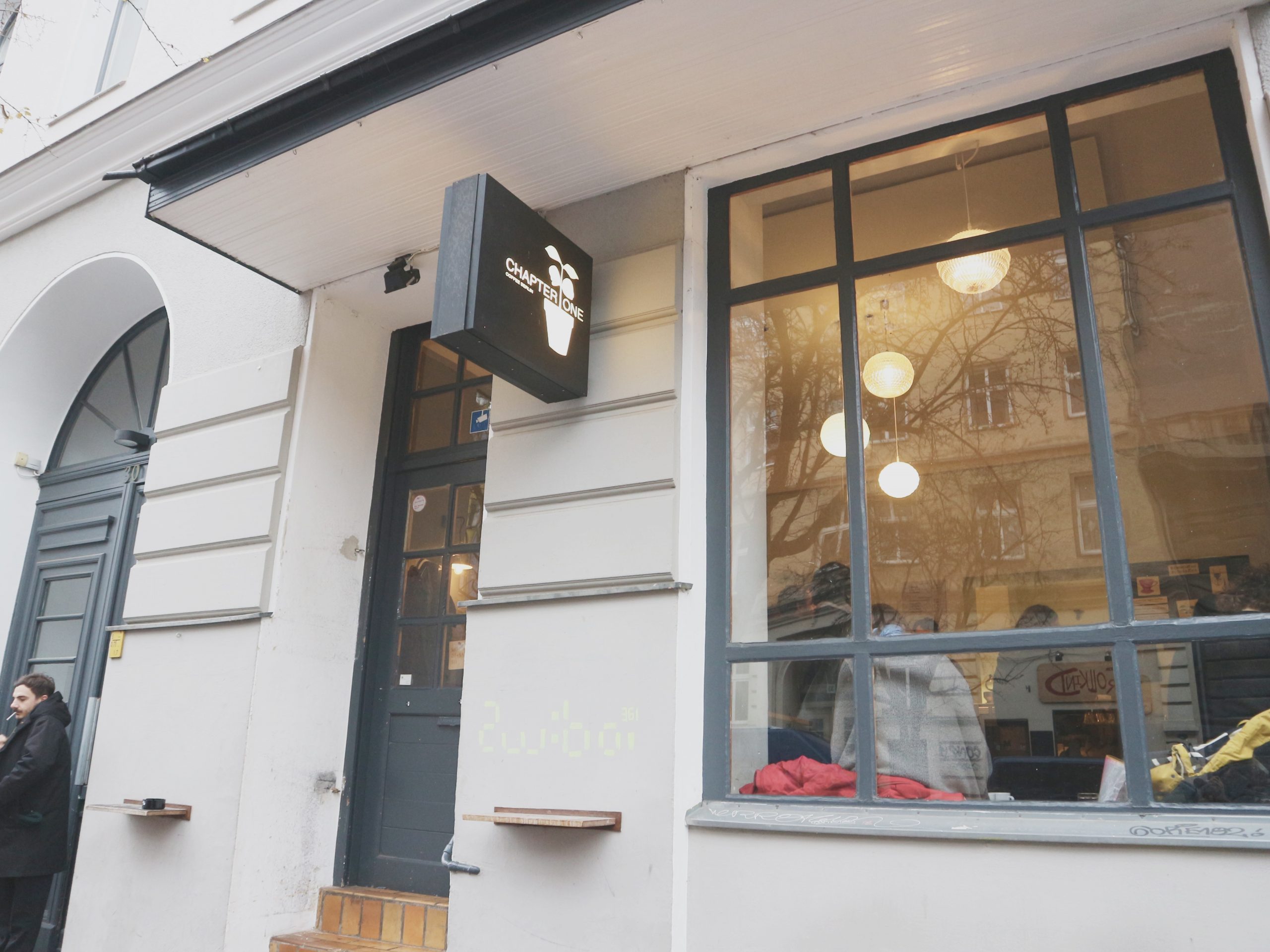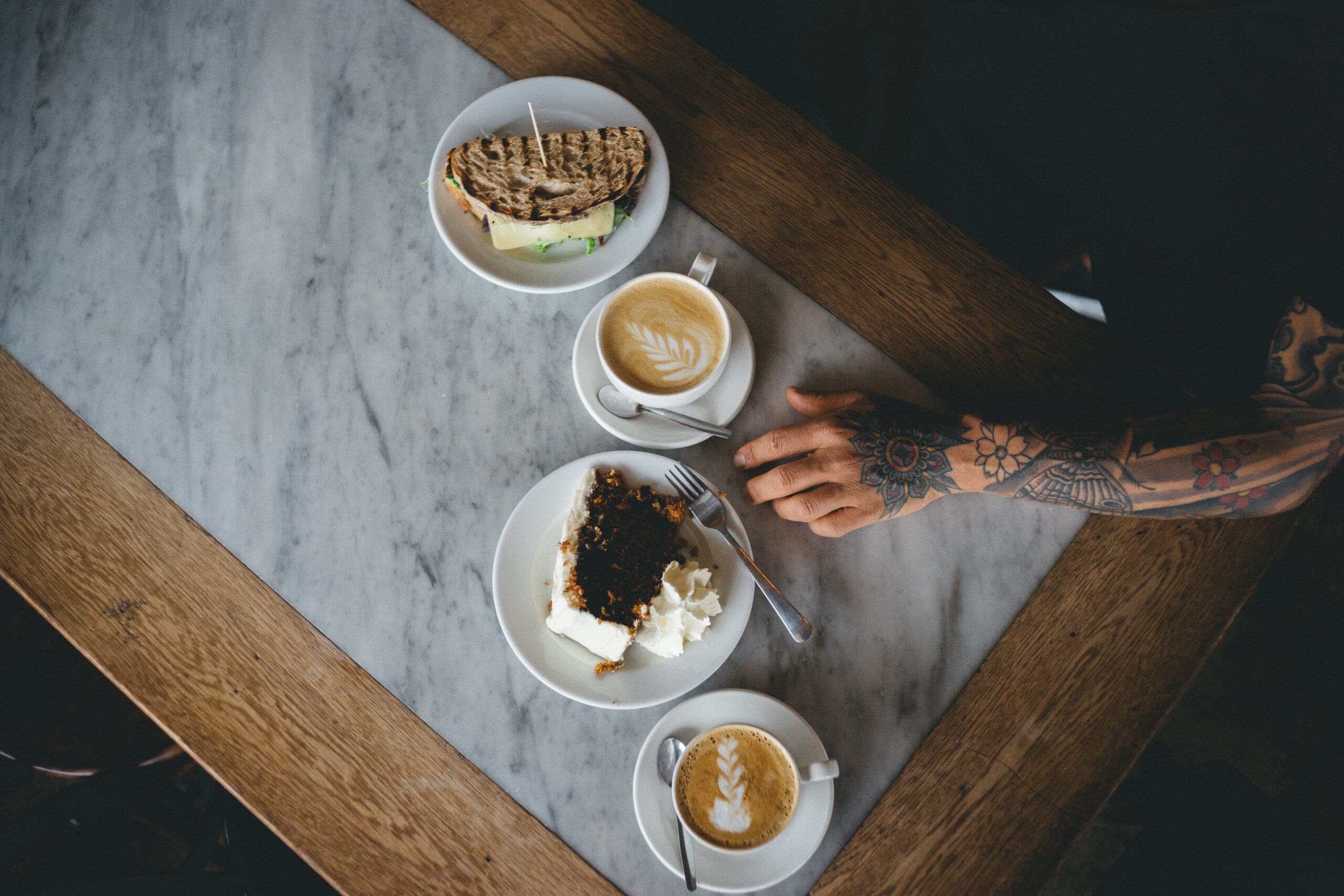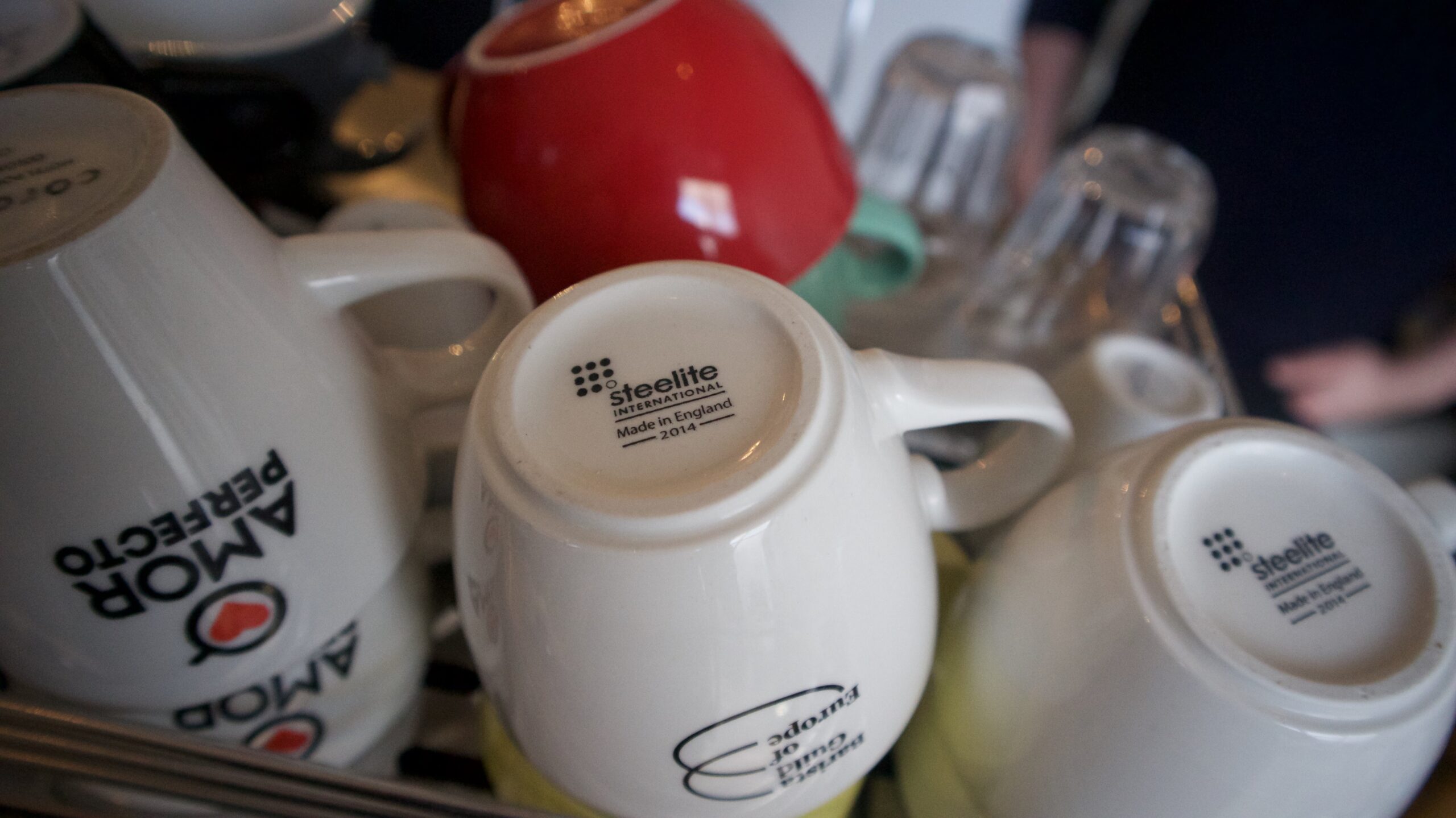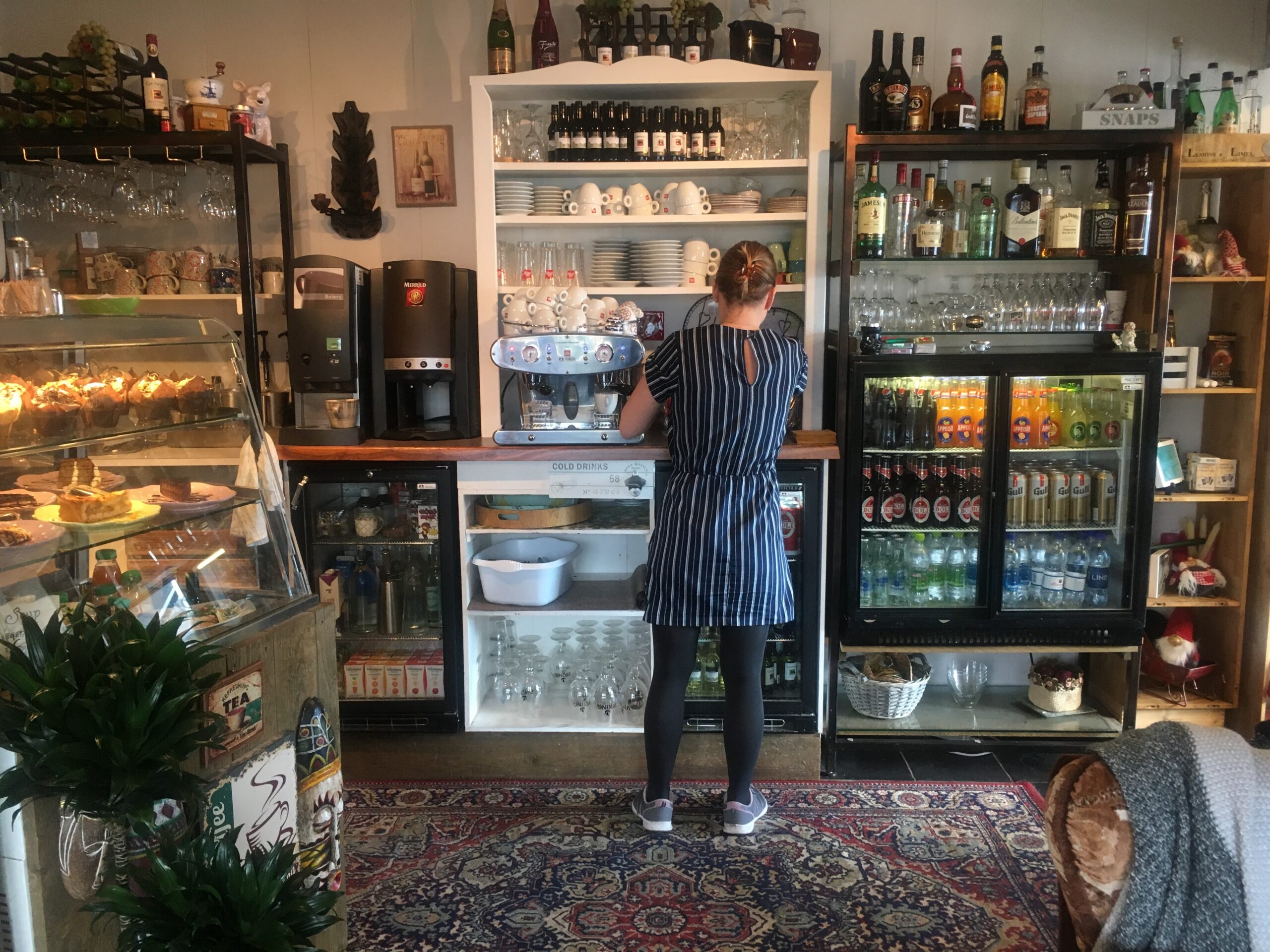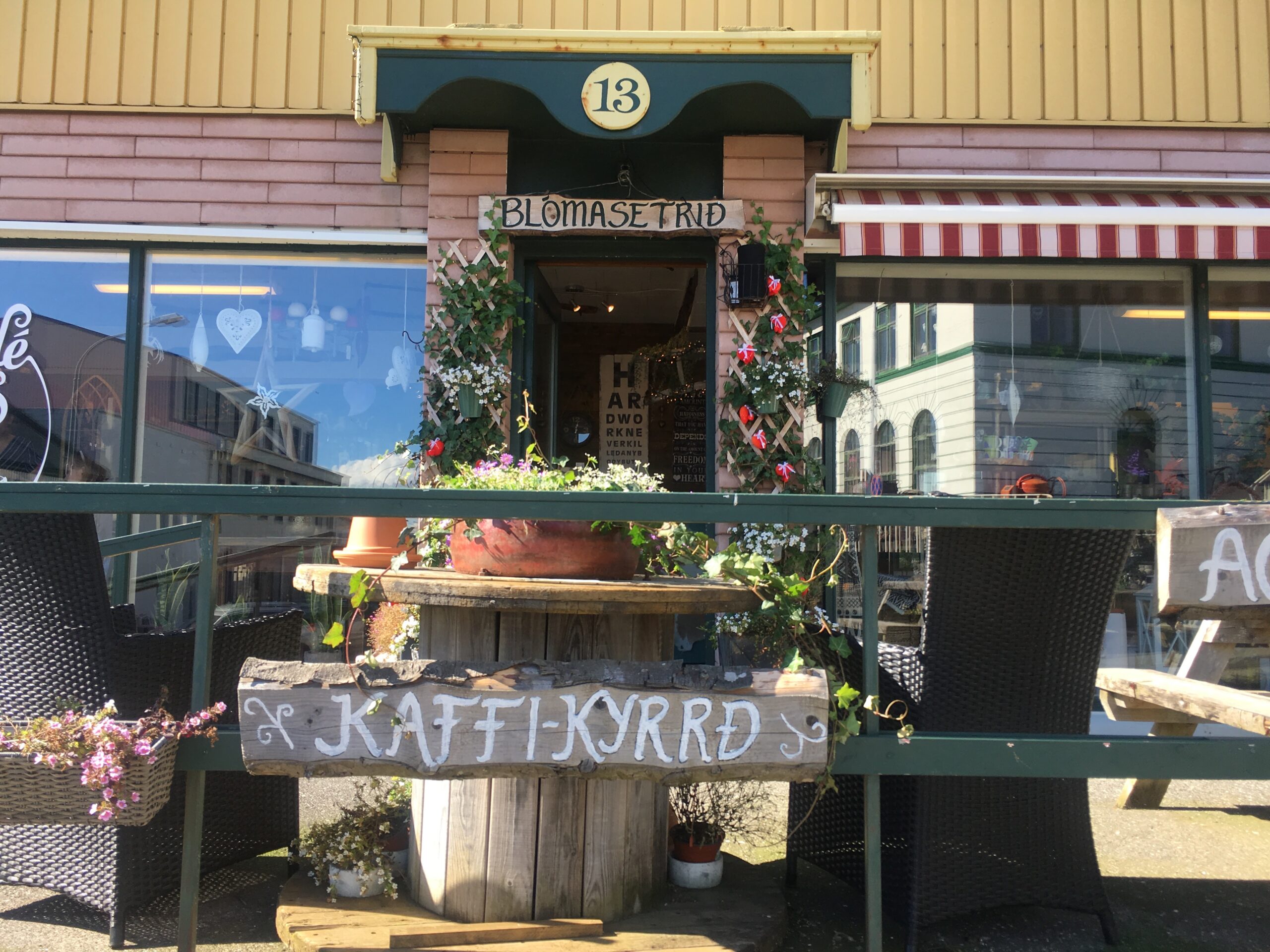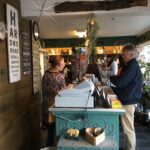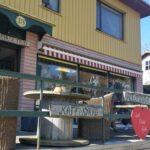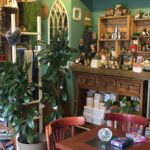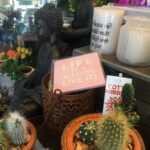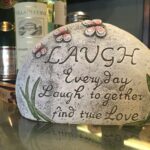A Day in Berlin
Berlin, 3.5 million inhabitants, 13 neighborhoods and more than 55 specialty coffee shops. What more do you need to continue reading?
Lee este articulo en español aquí http://www.essenceofcoffee.net/las-mejores-cafeterias-especialidad-berlin
Berlin, where the movement of the Third Wave of coffee has been spread from neighbourhood to neighbourhood, spreading into a network with more than 55 specialty coffee shops throughout the city.
Mariëlla Giljam's publications about Berlin on her blog “The Exploring Barista”, meeting Andreas Piel, who worked at “Kaffeekirsche Roastery”, in Reykjavik and Nora Šmahelová, co-owner of “Chapter One Coffee Berlin”, aroused my curiosity to visit Berlin, where the movement of the Third wave of coffee has been spread from neighborhood to neighborhood, spreading into a network with more than 55 specialty coffee shops throughout the city. Where you can enjoy the best grains on the market, prepared by passionate baristas, who came to this wonderful city from all corners of the world, and serve in spaces designed to raise your experience to another level by having a cup of coffee in your hands.
For those born after the cold war, Berlin is just a city in Germany. But for me and for many of my generation, Berlin is much more than a city. It is an Icon. We suffered with each Berliner, who jumped behind the wall, we dreamed of its demolition and we cried in hope, when finally Germany reunited and the "Iron Curtain" fell.
The plane landed at Tegel airport on December 6 at 10:30 PM. It was already night and therefore it was difficult for me to orientate myself. Since I only had one day in Berlin, the challenge was even greater, because in just a few hours, I had to learn to move around in a big and unknown city.

Brandenburg Gate 
U-Bahn station at Alexanderplatz 
Berlin Tegel Airport
As the bus enters the city, I noticed that we passed through places that are very familiar to me: Tiergarten, the Brandenburg Gate, Friedrichstraße or Alexanderplatz and the feeling of being lost vanished.
Fortunately for me, traveling in Berlin with public transport is very easy and cheap, thanks to the 24h Berlin Welcome Card, which cost only 19.90 euros. You can travel by bus and metro in the areas A and B.
KASCHK. Linienstrasse 40,
Their focus is directed to quality coffee, local and Nordic craft beers and a couple of Shuffleboard tracks, a game similar to petanque but with discs and on a wooden table.
As I was on my way to “The Barn Roastery”, I spontaneously decided to get myself a cup of coffee at “KASCHK”.
Something that striked me was the combination of coffee, beer and long tables, where everyone shared a table, which reminded me of the Oktoberfest.

While I went, sip by sip, giving a good review of my double espresso (a blend 66% El Salvador and 33% Kenya, both washed and toasted by “Fjord Coffee Roasters”), the customers went looking for their dose of caffeine. All to take away, but nobody bought their own cup, which leads me to reflect on the amount of waste generated by it and ways to stay loyal to my manners and reduce as much disposable packaging as possible.
Unfortunately it is something that is becoming more common and it is not surprising that the European Union contemplates in its plan to charge a tax for disposable packaging.
THE BARN ROASTERY. Schönhauser Allee 8
“The Barn” has 6 establishments in Berlin. Everyone has coffee as an element, but each of them is focused on different segments
of the gastronomic industry: barista school, natural wines and cocktails with coffee, cakes and seasonal menu, sandwiches and artisan cakes, coffee tasting menu or different preparation ways to filter coffee, to get their pure taste.
The Barn Roastery opened in 2012 and I think it is a must for every coffee lover. From here all the coffee they offer is sold and sent to the whole world.
The space, carefully designed and with a marked industrial accent, is a bit noisy since there is no acoustic isolation between the design, roasting and packaging areas of the cafeteria.
But it was music for my ears! I enjoyed it while drinking their delicious "signature drink", the Flat White Christmas, which has subtle aromas of cinnamon, apple and clove.
Out of all its establishments, “The Barn Roastery” has the most pure coffee taste, with a wide range of specialty coffees to enjoy in different filter formats and a menu of drinks based on espresso, which are well known throughout the world, including us. Highlighting the baristas for their professionalism, kindness and good treatment to the client.
RÖSTSTÄTTE BERLIN. Rosenthaler Straße 40-41
“Röststätte” began its journey in 2003 as distributors of espresso machines and mills.
Today, they have two coffee shops: “Röststätte” at Ackerstraße 173 and “Röststätte Berlin”, which is located inside an inner courtyard between buildings in the direction of the Rosenthaler Straße 40 and 41, in addition to the coffee roaster.
Although my intention was to visit the establishment in Ackerstraße 173, but the gps and the torrential rain that fell on Berlin at that time, guided my steps towards the new establishment in Rosenthaler Straße 40-41. The cafeteria is elegant, cozy and with a table service. The coffee that I drank was a double latte perfectly executed. I did not entertain myself there as it was not the establishment I wanted to visit and I still had to go to the more important places on my trip, for which I had to move to the opposite side of the city.
CHAPTER ONE COFFEE BERLIN. Mittenwalder Straße 30
The Kreuzberg a neighborhood with little gem with a coffee aroma, Chapter One Coffee Berlin.
The Kreuzberg is famous for being the neighborhood for students, artists and the great Turkish community, where are multiple restaurants, second-hand shops, street art, the famous Marheinekehalle (a market of the 19th century and one of the last markets in Berlin) and a little gem with a coffee aroma, Chapter One Coffee Berlin.

Björn Koepke and Nora Šmahelová are the owners of Chapter One Coffee Berlin, a Third Wave café, where, just a few steps away from the door, we enter a space with minimalistic but very cozy design and presided over by three vacuum coffee makers, a detail that guarantees a very good experience with coffee.
Nora is the German Barista Champion of 2002, judge of the World Coffee Events, trainer authorized by the SCA and the green coffee sales representative of Ally Coffee, among other things.
She was a judge at the Icelandic Barista Championship in early 2018, where I met her for the first time. When I chatted with her, she encouraged me to get to know the Berlin coffee scene.
Chapter One Coffee Berlin works with coffees with a light medium roast for both espresso and for filter, which is toasted by others. The subject of the roasting point surprised me pleasantly, because in my opinion, the roasting point is more related to the grain than to the infusion method. Each coffee bean has its correct roasting point to get the best out of it, so that it can be used both in filter and in espresso, instead of toasting it differently for filter and for espresso. But ... this is just my opinion and, as we know, depends on taste colors.
Nora prepared me an Ethiopian Guji in the vacuum coffee maker and I have to admit that it is one of the best filtered coffees I have ever had; The vacuum coffee maker always pleasantly surprises me and I always like coffees prepared with this method. Almost two hours later, it was time to say goodbye to Nora and Björn, but not before promising an upcoming visit before summer.

I left Berlin with a very good taste in my mouth and with the feeling that I will come again many times. There still remains Father Carpenter, Populus Coffee, Kaffee Kirsche, Röststätte to meet Nicole Battefeld and others of the more than 55 specialty coffees that are in this wonderful city. But, in spring and without rain ...
Your barista, neighbor and friend,
Amilka Lee, The Travelling Barista.
The Barista in Iceland
If there is a country where the role of the barista is valued as the great specialist in the preparation of coffee drinks than it would be Iceland.
To read in Spanish go to http://www.essenceofcoffee.net/islandia-valora-baristas/
Not in vain was he a forerunner in using the term barista in Icelandic to refer to them and has become a role model for other countries. Our collaborator Amilka Lee tells us, author of the blog coffeelovers.es, who has been working there as a barista.
The figure of the barista was not always known in Europe and appears in parallel to the third wave of coffee, a movement focused on producing and serving high-quality coffee, reaches the Scandinavian countries, where the consumption per capita is the highest in the world, and extends throughout the continent reaching the Mediterranean countries.

In Iceland, coffee establishments have professional baristas.
And it is no coincidence that the European barista movement emerged from Scandinavia. Apart from the large consumption of coffee in countries such as Norway, Sweden, Finland, Denmark and Iceland, there is a greater awareness of fair trade and sustainability, values that go hand in hand with those of the third wave of coffee that considers coffee as a craft food. In fact, the Specialty Coffee Association of Europe was founded in 1998 in Norway, the same year in which the first Norwegian Barista Championship was held. It was the seed for the first World Barista Championship, held in the city of Monaco in the year 2000 with a clear Scandinavian domain: 1st Robert Thoresen (Norway), 2nd Erla Kristisdottir (Iceland) and 3rd Martin Hildebrandt (Denmark).
The barista movement arises in Iceland at the same time as in Norway and Denmark and to understand why it is necessary to review a little the history of Iceland. Iceland was part of the kingdom of Norway from 1262 to 1814 and from 1830 to 1944 was controlled by the Danish Crown which was its connection to the continent (culture, politics and raw materials) and its only provider of roasted coffee until 1984 sees the first Icelandic company that decides to buy green coffee and toast it.
Personally, in the country, I was lucky enough to meet Sonja Grant, barista, toaster, trainer and Icelandic businesswoman. She has worked with specialty coffee since 1995, spending 13 years with Kaffitár as a barista, trainer, general manager and quality controller. In 2008, she founded and directed the first cafeteria and micro-roaster of the third wave in Iceland and in 2016 she promoted Kaffibrughusið, a cafeteria, micro-roaster and training room. She is one of the pioneers of the World Barista Championship and other barista competitions. She has also been involved in the organization and development of the judging system since 2000.

The figure of the barista is well-known in Iceland as they are responsible for preparing coffee drinks in all coffee shops.
Last summer I met with her to interview her and, accompanied by a few cups of coffee, we chatted about the reality barista in Iceland from its beginnings to our days. When Sonja started working as a barista, in 1995, there was no name or job category that defined the work and functions of the barista, he or she, was just a person who worked in a cafeteria. It is from the first championships in Norway and Monte Carlo when the name of barista began to be used to define the waiter whose knowledge about coffee goes beyond its preparation. "After the year 2000 we could have used the word barista, but decided to translate it into Icelandic as kaffibarþjónn so that the Icelandic baristas had something to be proud of," she told me. The figure of the barista is well known in Iceland as responsible for preparing coffee drinks in establishments such as coffee shops, restaurants or hotels. "The SCA diplomas help to know the level of knowledge of the barista and the ideal would be that with each one is accompanied by a different salary stretch but, unfortunately, as happens in other countries, being a barista is not a job with a salary high". "Between a new barista and another experienced one, the difference is not much, since the price of the cup of coffee is what it is and is closely linked to the economy of the country, that is, even if the cup of coffee has a higher price In other countries, the costs are also higher, leaving little room for manoeuvre, "he adds.

Sonja Grant, pioneer of specialty coffee in Iceland with Amilka Javier Lee Gámiz, author of the article.
Regarding training, there is no school, large companies have training programs and tests to establish the level of each barista and its category. For example, the company in which he worked has three different categories of baristas: A (very experienced), B (less experienced but with knowledge of the preparations) and C (in training). To increase the level and salary it is necessary to pass a test. "Being a barista is a different profession because we learn by working. We can read all the books and it would be wonderful if everyone was trained in a school but we always have to be behind the counter facing the customer and this is how we really learn, "adds Sonja.
Working as a barista in Iceland has given me the opportunity to put everything I learned into practice, share it and learn new things. In Spain, although we still have a long way to go in terms of general coffee culture, filtering methods and qualities, I have noticed a positive change in my return after spending three years abroad. I have to congratulate all my colleagues for the training that is being done throughout the country, which is outstanding, as well as the coffee championships. Maybe we have a long way to go, but what I do know is that we are on the right path.
Photos: Amilka Javier Lee Gámiz; Te & Kaffi; Kaffitar
Reykjavik 5 best cafes.
If you are a coffee lover and you are planning to visit Iceland, let me put you in a situation.
In Iceland, you drink coffee, a lot of coffee!
In winter, the weather and the few hours of light are the culprits. In summer it is the desire to enjoy the long days without end. But the reason in both cases is the same: to stay awake!
Maybe it is because of its small size like provincial capital, to drink quality coffee is an easy task and a satisfaction to coffee lovers. Speciality coffee is present at almost every coffee place. The cafés are located at the street, in shops, bookstores, museums, etc ...
The first thing you feel when you arrive in Iceland, is a slap of cold, clean air, in your face to remind you that you are far away from your usual environment. The second is, how your heart shrinks with the sight of the first fumaroles and lava fields.
If you decide to travel with a rented vehicle through Iceland (fully recommended) the first stop for that first coffee should be at Pallet, which is located in the coastal town of Hafnarfjörður, on the route from Keflavik airport to Reykjavik (note: the "f" sounds like a "p").
PALLETT KAFFI
Far from the rush of tourism with local customers and a warm family atmosphere, the Pallet Kaffi is run by Pálmar Þór Hlöðversson and David Anthony Noble, who were not there at the time of the visit. Kári Hrafn, a young and passionate barista, served and attended us to our needs. The espresso, blend of colombias, toasted by Kaffitár and mixed exclusively for them, was still in the testing phase which is why they could not provide us with information about it. The filter coffee "Venjulegt kaffi" (the filter coffee has received many different names) is also a colombia, roasted by Kaffibrugghusíð, a little more clear and ideal for V60.

From their menu of coffees, two options with Icelandic name stand out the most: the "Tvíhleypa", which is a combination of cappuccino and espresso, served in different cups (something usual and that many people ask for) and "Jurtamjólk", literally vegetable milk.
Apart from coffee they offer soups, breakfasts, meals and cakes, which are all "homemade" and made from local products.

KAFFITÁR - PERLAN MUSEUM
Kaffitár, the birthplace of many renowned Icelandic baristas, such as Sonja Grant or Tumi Ferrer, with a history linked to specialty coffee since the early 90s, has grown to become one of the two most important chains in Iceland with its coffee roastery and 7 cafés. 75% of their coffee is "direct trade" with its main origin Latin America. The coffee has a high-quality standard and is sustainable.

Linking a tourist spot with a good coffee is possible at the Perlan Museum, a symbolic building in the city of Reykjavik. You have access to the “Wonders of Iceland” tour on the lower floors. On the fourth floor (with free entry) there is an impressive glass dome with a 360⁰ terrace from where you can enjoy a wonderful view of the city and its surroundings. The café Kaffitár and a restaurant are located on the fifth floor.
In its coffee menu we could find: espresso, americano, cappuccino, latte, espresso macchiato and filter coffee "bolli með ábót" (cup with filling). It being summer, cold drinks are also on the menu, such as the ice versions of the previous ones, affogato and espresso tonic.

As a slow brew they only have a V60 hot or with ice.
They have two mills, one with the blend of the house "Húsablanda"(a combination of Central American, South American and Indonesian beans) and the other is a "single" ( the origin rotates).
KAFFIHÚS VESTURBÆJAR
We continued our trip to the corner of the street Hofsvallgata to Melhagi which is in the Vesturbær (west bay) district. There we found the Kaffihús Vesturbæjar, which was an old pharmacy, from which the beautiful shelves and the marble counter are still preserved, remodelled into a café.

I find it particularly charming when a "lifelong" business is transformed into a different one and this one honours the previous one, while preserving all possible elements.
At the front counter, Anita Markowicz welcomed us with a smile and told us that Pétur Marteinsson, Gísli Marteinn Baldursson and three of his friends thought that the neighbourhood needed a café. After presenting their idea to the owner they got down to work, expanding the space but keeping as much as possible of the old pharmacy and adding vintage furniture, which was given to them by the neighbours.
Currently, it is a meeting place for the neighbourhood that changes as the hours go by, from breakfast and lunch to coffee and cake in the afternoon to finish with beers, wines and dinners at nightfall.
Anita prepared a latte and an espresso with Brasil-Dona Nenem from Reykjavik Roasters and the best carrot cake I have ever eaten till now.

REYKJAVIK ROASTERS - BRAUTARHOLT
The second establishment of Reykjavik Roasters has a sober style and a very Scandinavian industrial touch, where coffee is the only protagonist.

In its menu we have: espresso, sliced, cappuccino, latte, mocha, flat white, chai latte, kaffiboli (filter coffee), Eitt Sett (espresso + cappuccino), Kaffismiðja (double espresso + jug of milk), Kældur kaffi (cold coffee) and as methods of "brewing": aeropress and kalita.
For espresso they use Dona Nenem Yellow Bourbon from Brazil that has notes of dark chocolate and hazelnut. For filtered they take Juan Carlos Vargas which have notes of black grape and maple syrup and Carmen Aragón that have notes of green apple and caramel, both are from the department of Tolima, Colombia and the Werka (a complex Ethiopian heirloom) which have notes of nectarine and molasses.

The "cold brew" is a powerful coffee from the Congo, with a taste that is a little more intense than the signature taste of the house.
TE OG KAFFI - MICRO ROAST
Te og Kaffi is the largest coffee shops chain in Iceland with 15 establishments (12 coffee shops, 2 Micro-Roast coffee shops and 1 Micro-Roast Vínbar) which, despite its size, still maintains the soul of third wave specialty coffee house in its establishment in the historic street of Aðalstræti, where the first Viking settled in Reykjavik.

Te og Kaffi has three types of roasted coffee for sale: the white line, which they only sell in supermarkets, the brown line (single origins and blends) that they have in all its coffee shops and the Micro-Roast line (small lots), which is only available at the places with the same name and that Kristín Björg roasts every Wednesday in Aðalstræti.

In the Micro-Roast espresso coffee is La Cuadra (a honey from Costa Rica) and for filter Loma Linda from El Salvador.
For brewing (Aeropress, Chemex, V60 and Siphon) there are three coffee options: Colombia La Claudina 100% Castillo, Costa Rica Don Eli of the Catuai variety and El Salvador Loma Linda of the Bourbon variety.
Pictures by Dan Raspbery.
One World, many ways to have coffee!
Since I am in Iceland, I have become more aware of how small the world has become and the importance that coffee has in it. Iceland, that small country in the northern hemisphere, nobody knew about it except for the volcanoes, their more international musicians (Björk and Sigur Rós) and those impressive landscapes.
Nowadays this great island is a travel destiny for people from all over the world as tourists or as workers.
But returning to the topic of this blog, coffee, all this influx of people enriches me with the little talks I have and learn a little more about the habits and ways of drinking coffee as well as the way they are called.
I have also found that each time the coffee is gaining ground to the other most drink infusion, the tea. In countries such as the United Kingdom, Australia, China, Taiwan, Japan and Korea, among others, the youngest are responsible for the change of trend.
Some things that I have learned ...
Central European countries usually add the name cafe to: cafe espresso, cafe cappuccino, cafe latte, cafe mocha, etc.
The many names of traditional filter coffee: black coffee, white coffee (with milk), drip coffee and filter coffee.
India and Pakistan love very hot drinks.
Americans always ask for sizes of "cups to go" and they love the "Gibson", latte with three loads of espresso.
As you can see, the experience is very enriching both personally and professionally and I am happy to share with all of you.
See you soon Coffeelovers!
My other media
https://www.instagram.com/coffeeloversby/
https://www.facebook.com/coffeeloversby/
Desde que estoy en Islandia más me doy cuenta de lo pequeño que se ha hecho el mundo y la importancia que el café tiene en el mismo. Islandia, ese pequeño país en el hemisferio norte, del que nadie sabía nada excepto por sus volcanes, sus músicos más internacionales (Björk y Sigur Rós) y sus impresionantes paisajes.
Hoy en día esta gran isla es destino obligado para gentes de todo el mundo tanto como turistas o como trabajadores.
Pero volviendo al tema de este blog, el café, toda esta afluencia de personas me enriquece con las pequeñas charlas que voy teniendo y aprendo un poco más de las costumbres y formas de tomar café en otras partes del mundo.
También he comprobado que cada vez el café va ganando terreno a la otra infusión más bebida, el té. En países como Reino Unido, Australia, China, Taiwán, Japón y Corea, entre otros, son los más jóvenes los encargados del cambio de tendencia.
Algunas cosillas que he aprendido….
Países centroeuropeos suelen añadir el nombre café a: café espresso, café cappuccino, café latte, café mocha, etc..
Los muchos nombres del café de filtro tradicional: black coffee, white coffee (con leche), drip coffee y filter coffee.
India y Pakistán les encanta las bebidas muy calientes.
Los estadounidenses preguntan siempre por tamaños de “cups to go” y les encanta el “Gibson”, latte con tres cargas de espresso.
Como podéis comprobar la experiencia está siendo muy enriquecedora tanto en lo personal como en lo profesional y yo estoy encantado de compartir con todos vosotros.
Hasta la próxima Coffeelovers!
My other media
https://www.instagram.com/coffeeloversby/
https://www.facebook.com/coffeeloversby/
Blómasetrið - Kaffi Kyrrð - Borgarnes - Islandia
Sueños.
Después de mucho tiempo, compartiendo en plataformas como facebook o Instagram lo que va sucediendo en mi día a día, mis experiencias con el café, los lugares que visito y las personas que voy conociendo, ha llegado el momento de dar un paso adelante, seguir creciendo, compartiendo y dejar constancia de todo en forma de blog.
Quiero dedicar este primer post al lugar que fue mi oasis en los momentos más duros que viví las dos primeras temporadas aquí en Islandia.
Blómasetrið - Kaffi Kyrrð
En el pueblo de Borgarnes se encuentra el acogedor café Kaffi Kyrrið que es a su vez floristería y gesthouse, todo en el mismo edificio. Desde el primer momento que entras te das cuenta de que estas en un lugar especial lleno de magia y tranquilidad donde el tiempo se detiene.
“We offer you a pause from the hectic big city life and our goal is to make your stay in Borgarnes as pleasant as possible.”
Blómasetrið - Kaffi Kyrrð
Blómasetrið - Kaffi Kyrrð - Borgarnes - Iceland
Dreams
After a long time, sharing on platforms such as facebook or Instagram what is happening in my day to day, my experiences with coffee, the places I visit and the people I am getting to know, it is time to take a step forward, follow growing, sharing and recording everything in the form of a blog.
Blómasetrið - Kaffi Kyrrð
Borgarnes is only 60 kilometers up north of Reykjavík, on the Borgarfjörð coast.
Settlement of the famous Egill saga and village where the cozy cafe Kaffi Kyrrð is located, an oasis on my trips between Snaefells and Reykjavik, is in turn a florist and gesthouse in the same building.
A special place full of magic and tranquility where time stops.
"We offer you a pause from the hectic big city life and our goal is to make your stay in Borgarnes as pleasant as possible."
Blómasetrið - Kaffi Kyrrið
In the lower part of the house, as soon as you enter, you will find the florist, the gift shop and the cafe. The space dedicated to the cafe has two spacious lounges with armchairs and low tables where you can enjoy the coffees, cakes and sandwiches that you can find in their menu.
Walls full of pictures and shelves full of books and various art forms that embrace you warmly.
The cafe gives way to a privileged terrace that, when the weather permits, is the best place to enjoy the sun's rays.
On the top floor is the guesthouse that has three bedrooms, living room, kitchen, bathroom and terrace.
But above all the soul of this place is the family that gives a warm welcome to all who visit them.
My heart keeps wonderful moments in Kaffi Kyrrð chatting with Katrín, daughter the owner, about coffee and life while drinking sip to sip the wonderful cafes that she prepares so fondly.
Katrín was the one who presented me the Bulletproof Coffee, to which we will dedicate a complete entry to know where, how and when of this preparation.
Kaffi Kyrrð
Skúlagata 13, Borgarnes
www.blomasetrid.is

